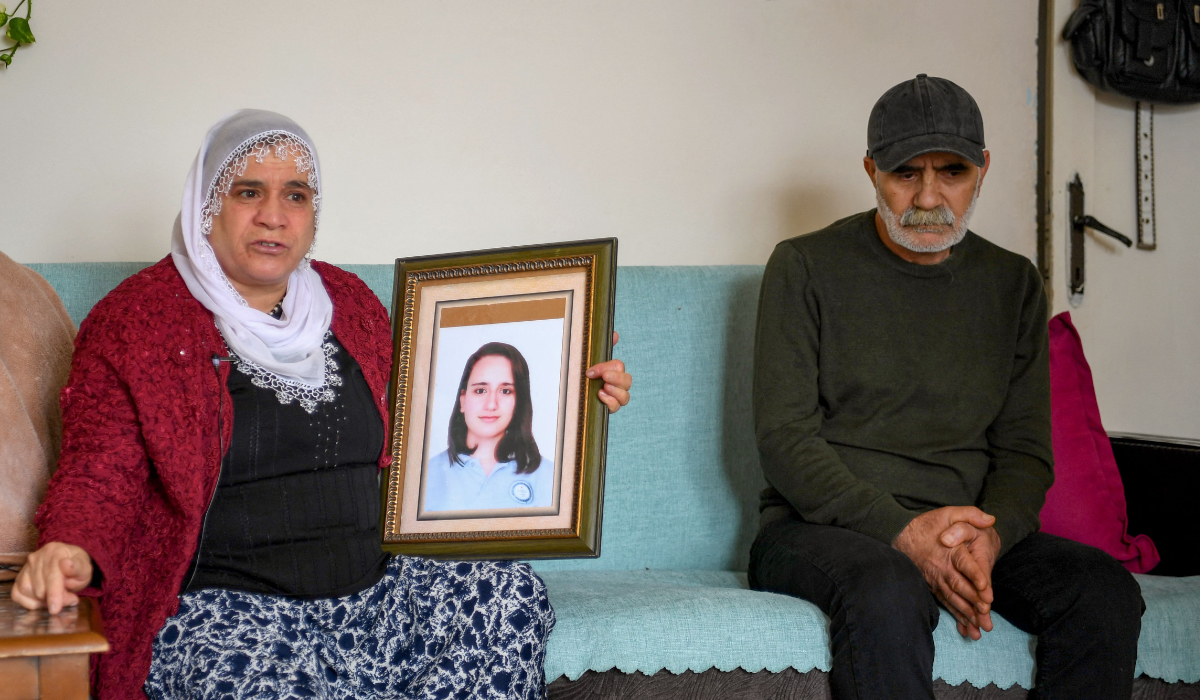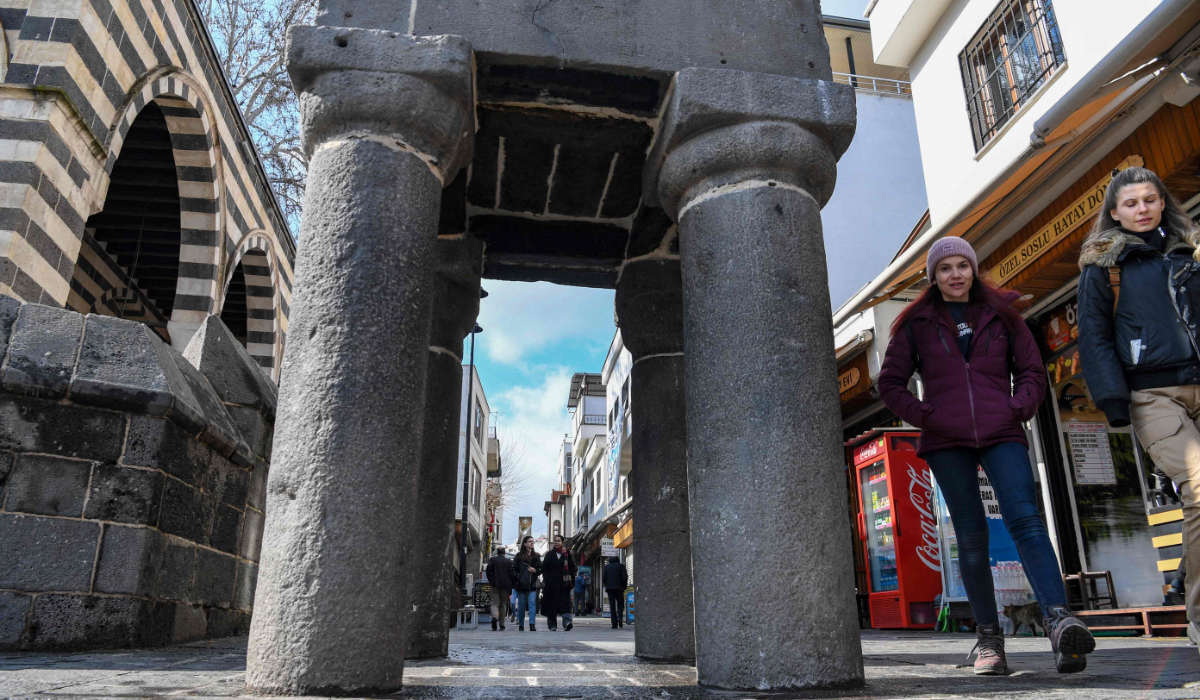WASHINGTON: Hamas has seen about half its forces wiped out in eight months of war and is relying on hit-and-run insurgent tactics to frustrate Israel’s attempts to take control of Gaza, US and Israeli officials told Reuters.
The enclave’s ruling group has been reduced to between 9,000 and 12,000 fighters, according to three senior US officials familiar with battlefield developments, down from American estimates of 20,000-25,000 before the conflict. By contrast, Israel says it has lost almost 300 troops in the Gaza campaign.
Hamas fighters are now largely avoiding sustained skirmishes with Israeli forces closing in on the southernmost city of Rafah, instead relying on ambushes and improvised bombs to hit targets often behind enemy lines, one of the officials said.
Several Gaza residents, including Wissam Ibrahim, said they too had observed a shift in tactics.
“In earlier months, Hamas fighters would intercept, engage and fire at Israeli troops as soon as they pushed into their territory,” Ibrahim told Reuters by phone. “But now, there is a notable shift in their mode of operations, they wait for them to deploy and then they start their ambushes and attacks.”
The US officials, who requested anonymity to discuss sensitive matters, said such tactics could sustain a Hamas insurgency for months to come, aided by weapons smuggled into Gaza via tunnels and others repurposed from unexploded ordnance or captured from Israeli forces.
This kind of protracted timeframe is echoed by Israeli Prime Minister Benjamin Netanyahu’s national security adviser who said last week the war could last until the end of 2024 at least.
A Hamas spokesperson didn’t respond to requests for comment on its battlefield strategy.
In a parallel propaganda drive, some of the group’s fighters are videotaping their ambushes of Israeli troops, before editing and posting them on Telegram and other social media apps.
Peter Lerner, a spokesperson for the Israel Defense Forces (IDF), told Reuters they were still some way from destroying Hamas, which he also said had lost roughly half of its fighting force.
Lerner said the military was adapting to the group’s shift in tactics and acknowledged Israel couldn’t eliminate every Hamas fighter or destroy every Hamas tunnel.
“There is never a goal to kill each and every last terrorist on the ground. That’s not a realistic goal,” he added. “Destroying Hamas as a governing authority is an achievable and attainable military objective,” he added.
Hamas leaders Sinwar and DEIF
Netanyahu and his government are under pressure from Washington to agree to a ceasefire plan to end the war, which began on Oct. 7 when Hamas fighters stormed into southern Israel, killing more than 1,200 people and seizing over 250 hostages, according to Israeli tallies.
Israel’s subsequent ground-and-air campaign in Gaza has left the territory in ruins and killed more than 36,000 people, according to Palestinian health authorities. The United Nations says over a million people face “catastrophic” levels of hunger.
There are about between 7,000-8,000 Hamas fighters reportedly entrenched in Rafah, the last significant bastion of the group’s resistance, according to Israeli and US officials. Top leaders Yahya Sinwar, his brother Mohammed, and Sinwar’s second-in-command Mohammed Deif are still alive and believed to be hiding in tunnels with Israeli hostages, they said.
The Palestinian group has shown the ability to withdraw rapidly after attacks, take cover, regroup, and pop up again in areas that Israel had believed to be cleared of militants, a US administration official said.
Lerner, the IDF spokesperson, agreed Israel faced a protracted battle to overcome Hamas, which has ruled the Gaza Strip since 2006.
“There is no quick fix after 17 years of them building their capabilities,” he added.
Hamas has constructed a 500 km (310 miles) subterranean city of tunnels over the years. The labyrinth, dubbed the Gaza metro by the Israeli military, is roughly half the length of the New York subway system. Equipped with water, power and ventilation, it shelters Hamas leaders, command and control centers, and weapons and ammunition stores.
The Israeli military said last week that it had taken control of the entire Gaza-Egypt land border to prevent weapons smuggling. About 20 tunnels used by Hamas to carry arms into Gaza were found within the zone, it added.
Egypt’s State Information Service didn’t immediately respond to a request for comment on Israel’s claims of arms-smuggling from the country. Egyptian officials have previously denied any such clandestine trade is taking place, saying they destroyed the tunnel networks leading to Gaza years ago.
Echoes of Falluja insurgency?
The Gaza incursion is Israel’s longest and fiercest conflict since it invaded Lebanon to oust the Palestinian Liberation Organization in 1982.
Netanyahu has defied domestic and international calls to outline a post-war plan for the territory. US Secretary of State Antony Blinken has warned that the absence of such a roadmap could trigger lawlessness in the enclave.
One Arab official told Reuters that criminal gangs had already emerged in Gaza amid the power vacuum, seizing food deliveries and conducting armed robberies.
The official and two other Arab government sources, who all requested anonymity to speak freely, said the IDF could face similar threats to those encountered by America in the city of Falluja in 2004-2006 following the US-led invasion of Iraq.
A broad insurgency in Falluja swelled the ranks first of Al-Qaeda and then Islamic State, miring Iraq in conflict and chaos from which it has yet to fully emerge two decades later.
Washington and its Arab allies have said they are working on a post-conflict plan for Gaza which involves a time-bound, irreversible path to Palestinian statehood.
When the plan, part of a “grand bargain” envisioned by the United States that aims to secure a normalizing of relations between Saudi Arabia and Israel, is complete, Washington aims to put it to Israel, the US officials said.
A United Arab Emirates official with direct knowledge of the discussions said a Palestinian invitation was needed for countries to assist Gaza in an emergency operation, as well as an end to hostilities, full Israeli disengagement, and clarity on Gaza’s legal status, including control of borders.
The emergency process could last a year and be potentially renewable for another year, according to the UAE official who said the aim to be to stabilize the enclave rather than rebuild it.
For reconstruction to begin, a more detailed roadmap toward a two-state solution was needed, he added, as well as serious and credible reform of the Palestinian Authority.
How the United States aims to overcome Netanyahu’s repeated rejection of a two-state solution, which Riyadh says is a condition to normalizing ties, is unclear.
David Schenker, a former US Assistant Secretary of State for Near Eastern Affairs, dismissed any suggestion of a clean IDF pullout from the Palestinian territory.
“Israel says it’s going to maintain security control which means that it’s going to constantly fly drones over Gaza and they’re not going to be limited if they see Hamas re-emerging, they’re going to go back,” said Schenker, a senior fellow at the Washington Institute US-based think-tank.
Gadi Eisenkot, a former Israeli military chief serving in Netanyahu’s war cabinet, has proposed an Egyptian-led international coalition as an alternative to Hamas rule in Gaza.
In a closed-door briefing last week to the Knesset Foreign Affairs and Defense Committee, he emphasized the complex nature of anti-militancy warfare.
“This is a religious, nationalistic, social, and military struggle with no knock-out blow but rather protracted warfare that will last many years,” he said.
INSIGHT: Diminished Hamas switches to full insurgent mode in Gaza
INSIGHT: Diminished Hamas switches to full insurgent mode in Gaza

- Hamas fighting force reduced by half — US officials
- Group relying on ambushes, improvised bombs, such tactics could sustain a lengthy insurgency































